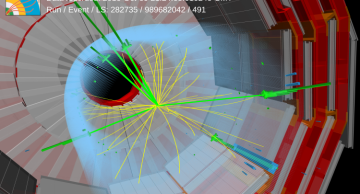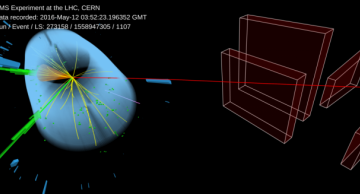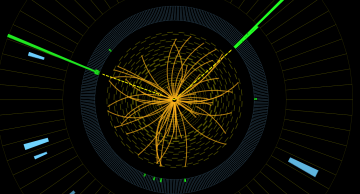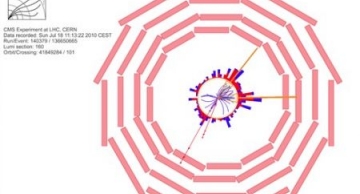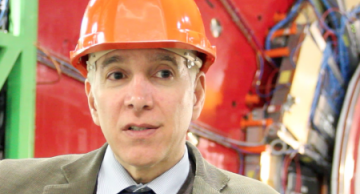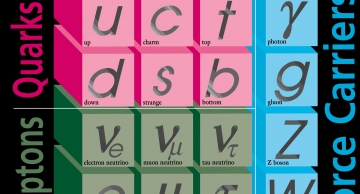The CMS collaboration has released the first observation of the simultaneous production of three W or Z bosons in proton-proton collisions at the Large Hadron Collider (LHC). The result is based on the data collected by CMS during 2016–2018 at a…
The CMS collaboration has examined for the first time the kinematic dependence of the production of a top quark and a W boson. This gives insight into the quantum interference of top quark production at the LHC and allows more accurate…
To investigate when the Standard Model will start breaking down, the CMS Experiment looks at extremely rare collisions where the Large Hadron Collider is working as a boson-boson collider. This can teach us more about the nature of the…
At the Hadron Collider Physics (HCP) Symposium held in Kyoto, Japan on 12–16 November 2012, CMS presented many new results, including updates on the search for the Standard Model (SM) Higgs boson as well as Supersymmetry (SUSY). Several of these…
CMS has presented a rich variety of results at the Electroweak Interactions and Unified Theories sessions of the Rencontres de Moriond conference in La Thuile, Italy. Links to the Physics Analysis Summaries (PAS) from CMS made public in the last…
Joe Incandela — CMS Spokesperson
Joe Incandela is a professor of Physics at the University of California, Santa Barbara (UCSB). His PhD under H. Frisch (Chicago) involved development and use of large area superconducting monopole detectors. His…
The standard package
The theories and discoveries of thousands of physicists over the past century have resulted in a remarkable insight into the fundamental structure of matter: everything that has been directly observed in the Universe until now…
Grab a can of soda, shake it thoroughly, and open it up. What do you get? It’s an explosion of fizz. A similar phenomenon in the subatomic world might help us probe the nature of fundamental particles.
Scientists have spent centuries searching for…
For the past four months the LHC has been ramping-up the intensity of the beams, creating billions of 7 TeV proton-proton collisions. This has enabled CMS to study a variety of known physics from the Standard Model, including the "re-discovery" of…

